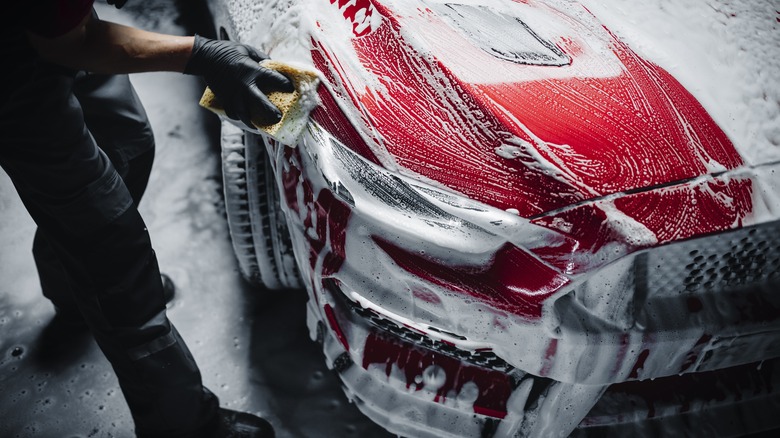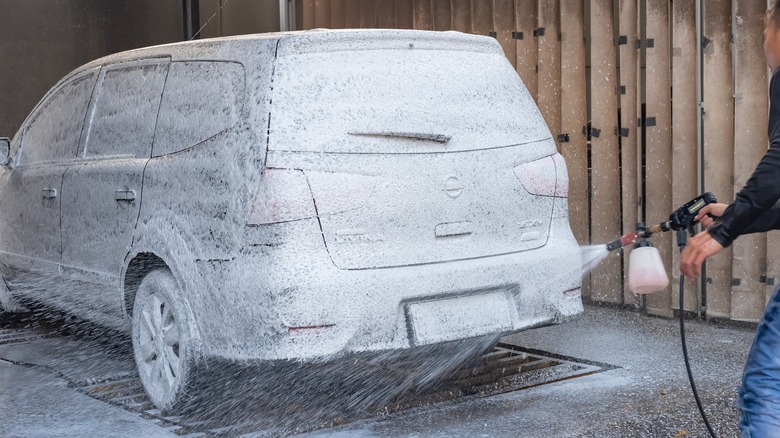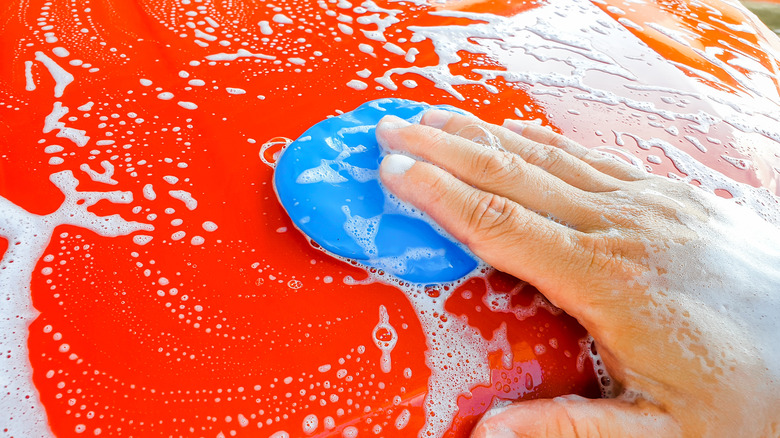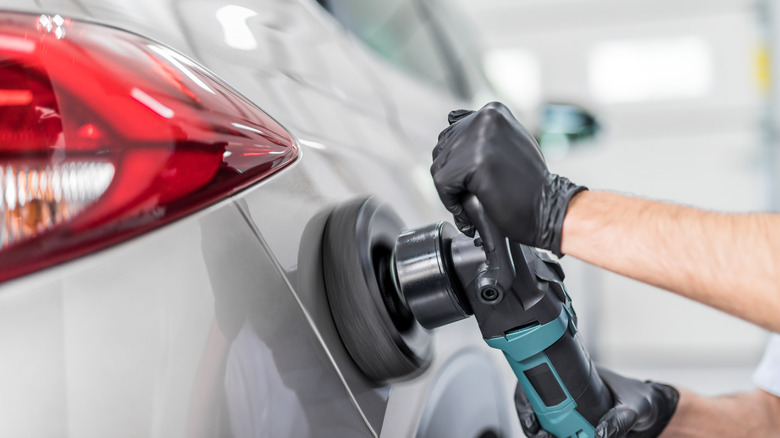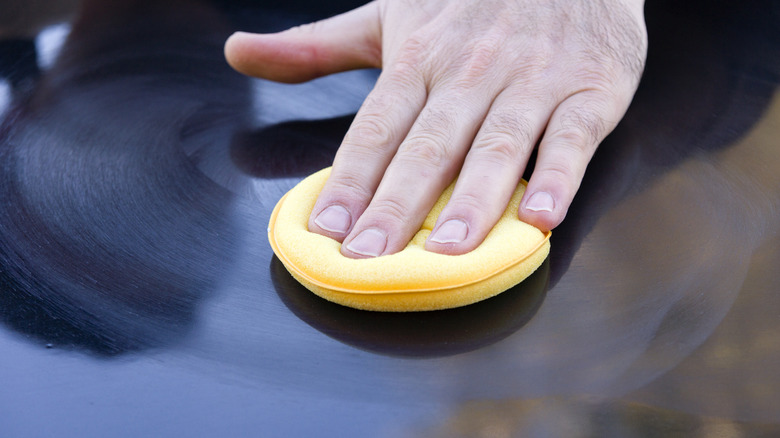How To Get Rid Of Hard Water Spots On Your Car
Professional auto salons and detailing garages pay close attention to water quality for a reason. Consistently using or exposing any vehicle to hard water leads to harmful water spots that are challenging to remove. Hard water has increased traces of magnesium, calcium, and iron that are harmful to clear-coat paint and could prove detrimental to car wash equipment.
When hard water dries over paint, it creates unsightly water spots, which are practically traces of the hard minerals left behind when the water evaporates. The good news is water spots are not the end of the world for your car's paint. However, removing them means decontaminating and polishing the paint, before applying a protective layer of wax.
Water spots are hard to avoid in changing weather, but regular waxing and polishing could lessen the damage. When water spots evaporate under the hot sun, the hard minerals "dig" into the clear coat, leaving behind peaks and valleys when viewed under magnification. Those "peaks and valleys" manifest as scratches or swirls on the paint.
Wash the car
Depending on the paint condition, there are three or four steps to remove hard water spots: Washing, clay bar, polishing, and waxing. Treating the paint with a clay bar is necessary if the surface feels rough after washing. Meanwhile, waxing seals the finish and helps protect against future water spot damage.
The first step is to wash the entire vehicle with water (preferably "soft" water treated with softeners or reverse osmosis) and a high quality car shampoo. If you have a foaming machine, covering the vehicle with foam and allowing the soapy mixture to dwell for a minute or two will help dissolve most water spots.
Wash each section using a wash mitt and rinse with clean water, ensuring there are no traces of foam or soap left on the paint. Grab a dry microfiber cloth and wipe each panel dry. At this point, take a few moments to check the remaining water spots on the paint. Moreover, it's the perfect time to check the surface for excessive roughness.
Clean paint should be as smooth as glass. If you gently rub your bare palm on the paint and the surface feels overly rough, consider decontaminating with a clay bar before polishing. When used right, a clay bar could remove hard minerals embedded in the clear coat while ridding the paint of other deep-seated debris.
Use a clay bar
Clay bars and lubricants are like sugar to sweets. The bars are somewhat abrasive and need lubrication — a commercially available clay lubricant or car shampoo mixed with water — to remove dirt without scratching.
The trick to claying a vehicle is to lubricate consistently. Grab a wash mitt, dunk it in a bucket of soapy water, and squeeze the foam over the surface. Next, knead the clay bar flat and vigorously rub over the surface, reminding yourself to apply more soap as you go along. You could also use a spray bottle filled with the soapy mixture for a more straightforward application.
Work on the roof, hood, and trunk before treating the vehicle's doors, fenders, bumpers, and lower parts. When the clay gets dirty or gunked up, knead the clay to reveal a cleaner side and proceed. Finish each section by rinsing it with clean water. The surface should be smoother after claying with less visible water spots. You can repeat the process if there are leftover rough patches but always lubricate to prevent scratching.
Polish the paint
Polishing the paint means shredding a small layer of clear coat to smoothen the "peaks and valleys" left by hard water spots. Always use a pure polish, not a polish-and-wax product that promises to do two counterintuitive jobs in one application. Polishing removes a layer of clear coat while waxing seals the surface for better protection.
You can polish by hand or use an orbital polishing tool. Squeeze three pea-sized amounts of polish on a sponge applicator pad and gently massage in small circular motions over a small section of the paint. Immediately wipe away the excess using a microfiber towel. Do not allow the polish to dry before wiping it off.
Polishing the paint removes hard water spots. However, be mindful when working on older or vintage cars with softer paint. Excessive polishing could remove the clear coat and expose the color underneath, which is not good.
Wax the paint
The final step is to apply a layer of wax to protect against water spot damage. Any wax will do, but carnauba or ceramic-based waxes offer a more substantial barrier against UV rays, weathering, and water spots. Always read the label on the bottle before proceeding. Some products do not bode well when applied under direct sunlight or hot surfaces.
Pour three to four pea-sized amounts of wax into a sponge pad and gently apply over a small section of the paint in a circular, overlapping manner. Allow the wax to dry for five to 10 minutes before removing the excess with a microfiber towel. Fold the towel and give it a final buff to reveal a smooth, shiny, and flawless paint with zero water spots.
Regular waxing or aftermarket ceramic coatings will help prevent water spots. Consider waxing your car at least once a month or after every season to maintain yearlong protection against contaminants.
